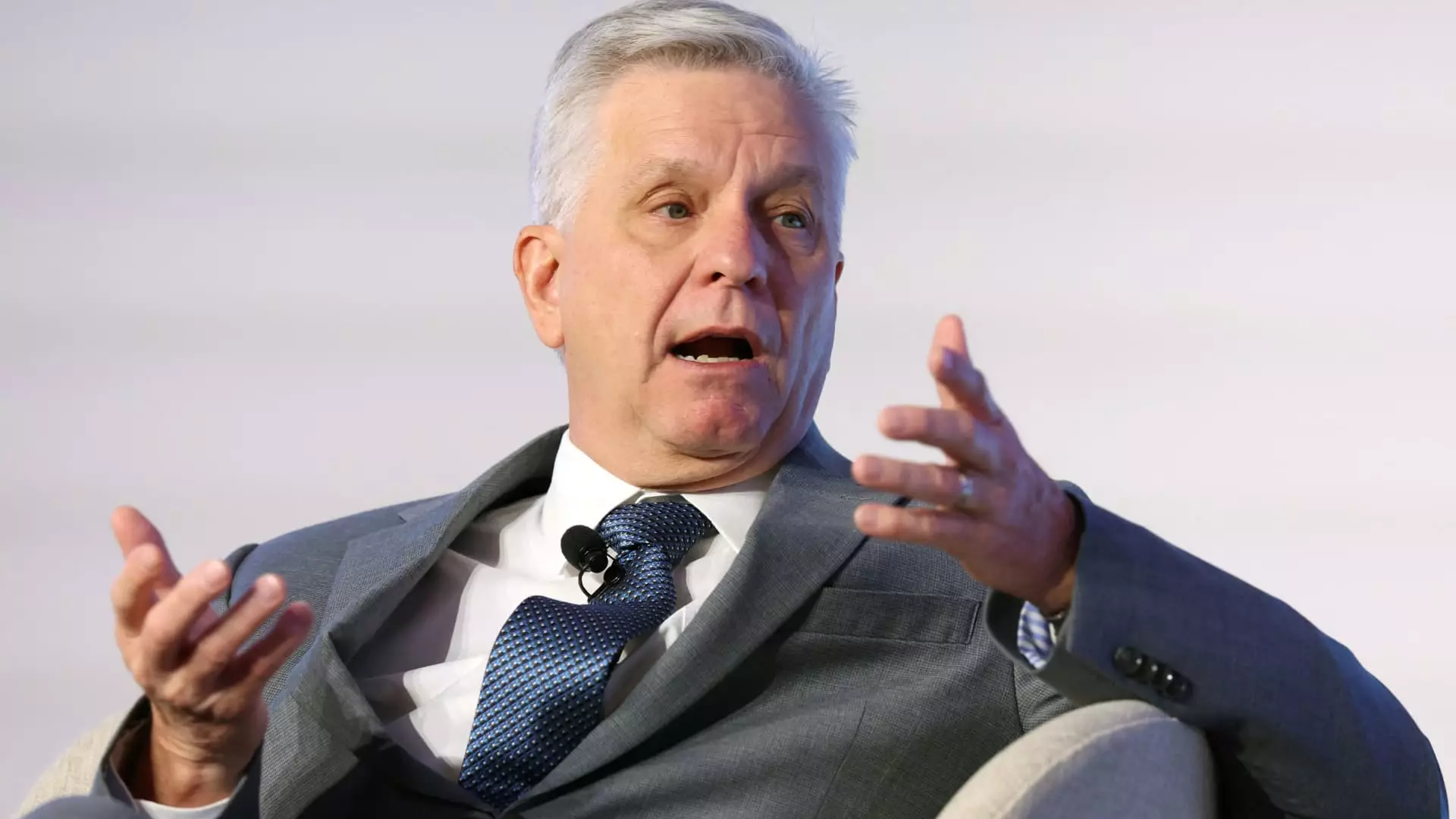In the economic landscape, the Federal Reserve remains a keen observer of inflationary trends, and recent statements from Governor Christopher Waller offer insights into possible monetary policy shifts. In a CNBC interview, Waller disclosed that he envisions the Federal Reserve could implement multiple interest rate cuts throughout the year, contingent upon a decline in inflation. The anticipation of easing inflation plays a pivotal role in shaping his outlook on monetary policy, particularly regarding the timing and frequency of potential interest rate reductions.
Waller painted an optimistic picture, suggesting that the first interest rate cut could occur in the first half of the year, provided economic indicators continue to reflect improvements in inflation and unemployment rates. His assertion that “as long as the data comes in good on inflation, … I can certainly see rate cuts happening sooner than maybe the markets are pricing in” reflects a willingness to adapt the Federal Reserve’s approach based on real-time economic data. This flexibility in policy decision-making underscores the central bank’s responsiveness to shifts in economic conditions.
Following Waller’s intricate forecasts, market traders began to recalibrate their expectations, increasing the perceived likelihood of a rapid succession of rate cuts. Data from the CME Group indicated a rise in traders’ bets for an interest rate adjustment in May, surging to approximately 50%. June, however, seemed to garner more favor as a more probable month for potential rate cuts. Such fluctuations in market sentiment illustrate the interconnectedness between Federal Reserve communications and investor expectations. The implied probability of a second rate reduction by the year’s end also saw a notable increase, now at around 55%.
This fundamental shift in market expectations highlights the pivotal nature of Waller’s remarks. By emphasizing the conditionality of the interest rate adjustments on economic data, he effectively sets the stage for ongoing monitoring of vital indicators. The nuances of this approach illustrate the Fed’s commitment to making data-driven decisions rather than adhering to a rigid policy framework.
At the core of Waller’s projections lies a substantial belief that inflation will gradually stabilize throughout the year. Despite lingering concerns about persistent price pressures, particularly in key sectors, he remains cautiously optimistic about the trajectory toward the Federal Reserve’s 2% inflation target. Recent figures indicated a consumer price index decrease to a 3.2% core reading (excluding volatile food and energy prices)—a slight decrease from the previous month, yet still above the Fed’s desired benchmarks.
Waller acknowledged the complexities surrounding inflation dynamics: “The year over year, stickiness that we saw in 2024 I think will start to dissipate,” he noted. This perspective diverges from the more guarded outlook held by some of his colleagues, emphasizing a broader discourse within the Federal Open Market Committee (FOMC) regarding the appropriate pace of monetary policy adjustments.
The upcoming FOMC meeting slated for January 28-29 serves as a crucial juncture for policymakers amid these evolving economic conditions. With zero expectations of immediate action anticipated in January, Waller reiterated the central bank’s patient approach, stating, “We’re in really no rush to do things.” This statement signifies that decisions will be anchored in tangible economic data rather than speculative trends, showcasing the Fed’s commitment to a careful and measured approach to monetary policy.
This deliberative posture by the Federal Reserve underscores the inherent challenges in navigating economic uncertainties. As inflationary pressures evolve and labor market dynamics shift, the central bank must adeptly balance the need for supportive monetary policy against the backdrop of a recovering economy.
Christopher Waller’s recent insights shed light on the potential for a transformative year in U.S. monetary policy. The expected interest rate cuts hinge significantly on evolving inflation data, with market participants keenly observing the Federal Reserve’s next moves. As the Fed navigates through 2024’s economic complexities, stakeholders must remain vigilant, ready to adapt to the implications of the central bank’s decisions.

